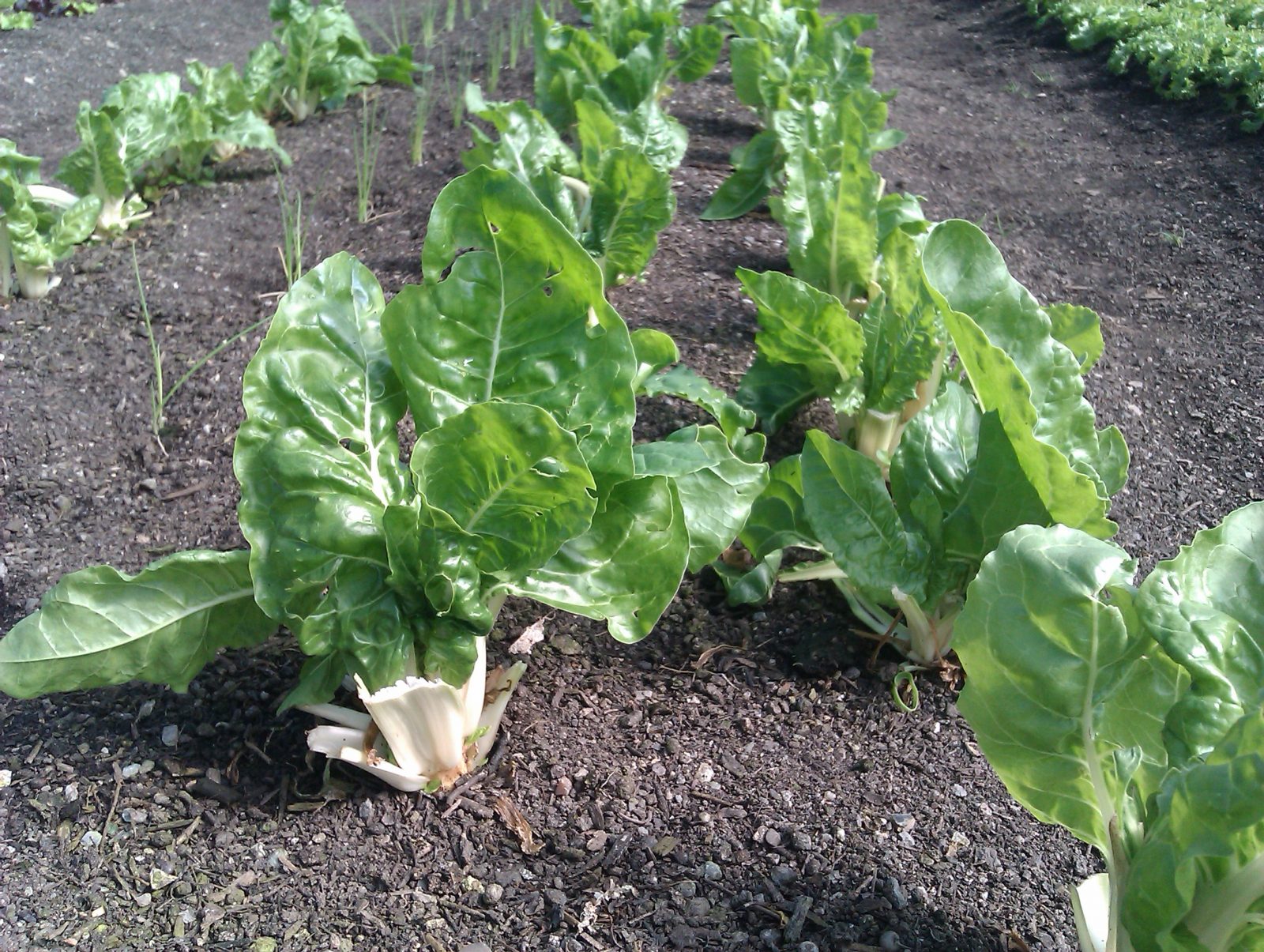
This Italian recipe tosses an assortment of green leaves with chilli and garlic in oil in a hot pan to make them more interesting.
It’s recommended by Bridget Gould, one of Camel CSA’s three expert growers, and comes from Bringing Italy Home by Ursula Ferrigno.
Any spring greens will do. Bridget says: “I have also used black kale to make this delicious dish and will be trying it with turnip tops when they’re available!”
Serves 4
Preparation time: 5 minutes
Cooking time: 10 minutes
Ingredients
675g mixed greens (spinach, Swiss chard, purple sprouting broccoli, endive)
2 tbsp olive oil
2 garlic cloves, peeled and crushed
1-2 small hot chillies, deseeded and finely chopped
extra virgin olive oil

Method
Trim and thoroughly wash the leaves and vegetables.
Fill a large pan with three litres of water and bring to the boil. Add salt to taste. Stir in the greens and boil for three to five minutes, or until just tender. Drain and refresh under cold water and drain again. Squeeze to eliminate all the water, then chop coarsely.
Heat the olive oil in a large saute pan over a medium heat. Add the garlic and chillies and cook lightly to soften. Add the greens, and saute until heated through. Season with salt and pepper. To serve, sprinkle with extra virgin olive oil or fresh lemon juice.
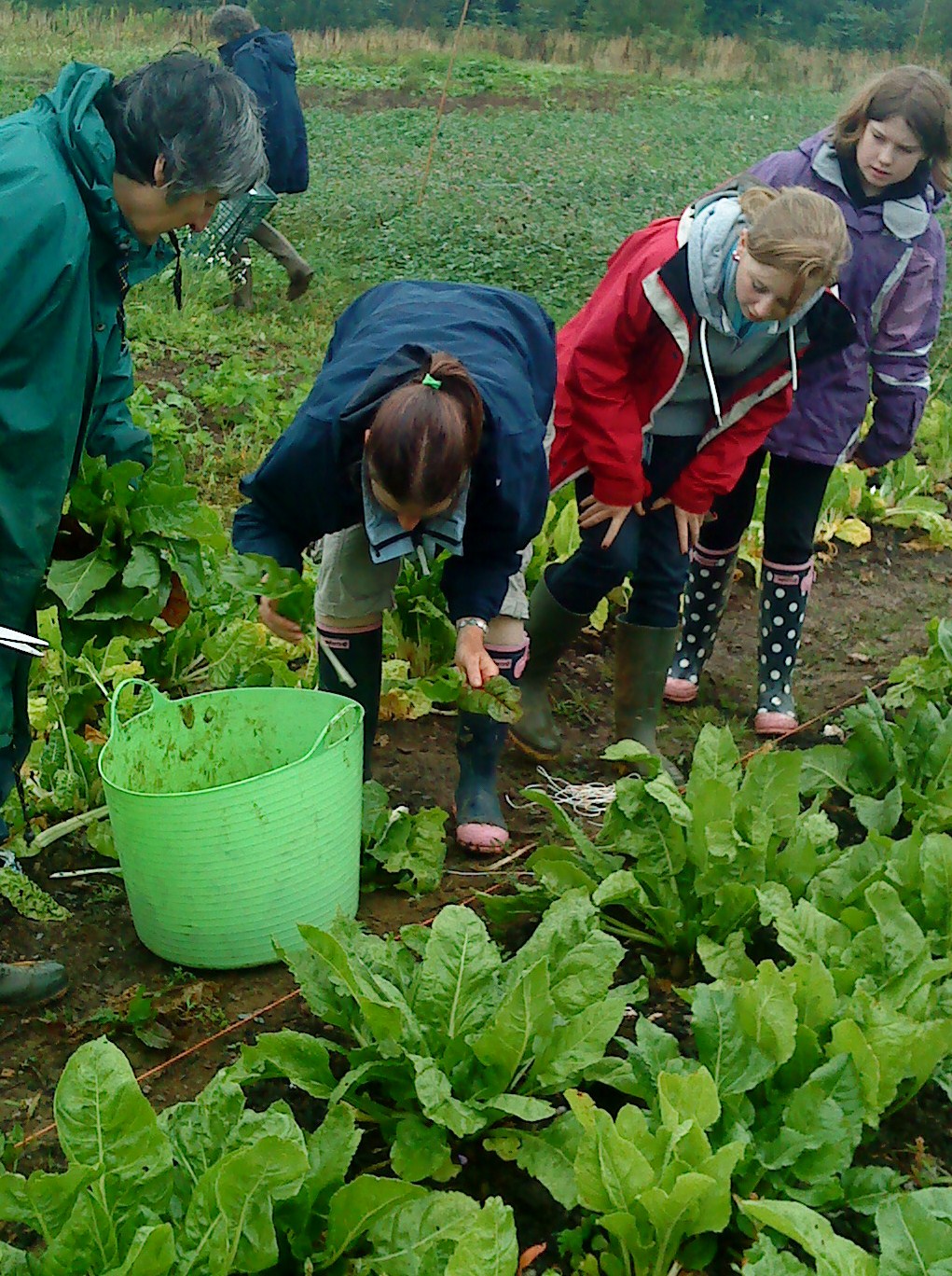
This tasty vegetarian dish is recommended by VegBox Recipes. They say: “This is an amazingly delicious recipe for Swiss chard or spinach lasagne. We kept going back for more.”
Serves 4
Preparation time: 30 minutes
Cooking time: 45 minutes
Ingredients
1 packet of no-cook lasagne sheets
500g Swiss chard (or spinach)
2 medium onions
4 cloves garlic
200g tub of half-fat creme fraiche (or Greek yoghurt)
75g pine nuts
200g blue cheese, such as Dolcelatte or Gorgonzola
200g mozzarella cheese
½ teaspoon grated nutmeg
1 tablespoon olive oil
750ml milk
1 oz butter
2 heaped tablespoons cornflour
1 bay leaf
75g parmesan cheese (or Cheddar)

Method
Pre-heat the oven to 180C (gas mark 4, 350F) . Heat a large pan (dry) and add the pine nuts. Cook, stirring often, for 2-3 minutes, until they start to brown. Put them in a bowl, to stop them burning.
Peel the onion and chop finely. Peel and crush the garlic. Wash the chard or spinach leaves and dry thoroughly (a salad spinner is ideal). Chop roughly.
Gently heat the olive oil in a large pan. Add the onion and garlic and saute for 5 minutes, until the onion is starting to go translucent. Add the chard or spinach and the nutmeg and stir well. Cover and cook for 3 minutes, until the chard or spinach has wilted.
Mix in the creme fraiche. Crumble the blue cheese and add to the chard or spinach mixture. Grate the mozarella and add. Stir well. Season with salt and pepper to taste.
To make the sauce, put the milk in a pan, add the bay leaf and bring to a gently boil. Simmer for 5 minutes on the lowest heat setting. Remove the bay leaf. Turn off the heat.
Mix the cornflour with 1 tablespoon milk or water, to form a thick paste. Pour into the milk, whisking constantly. Heat gently until the sauce thickens. Simmer gently for 3 minutes. Add more milk (a little at a time) if the sauce is too thick. Then add half ofthe cheese and stir well, to melt it. Season with salt & pepper to taste.
Put ¼ of the cheese sauce into the bottom of a lasagne dish (about 9 or 10 inches in length). Cover this with ½ of the chard or spinach mixture. Top with lasagne sheets. Repeat. Top the lasagne with the remaining cheese sauce. Sprinkle the top with the remaining cheese.
Bake for about 45 minutes until the lasagne is bubbling and the top is golden brown. Top tip: this is easier to serve if you let it stand for 10 minutes after baking.
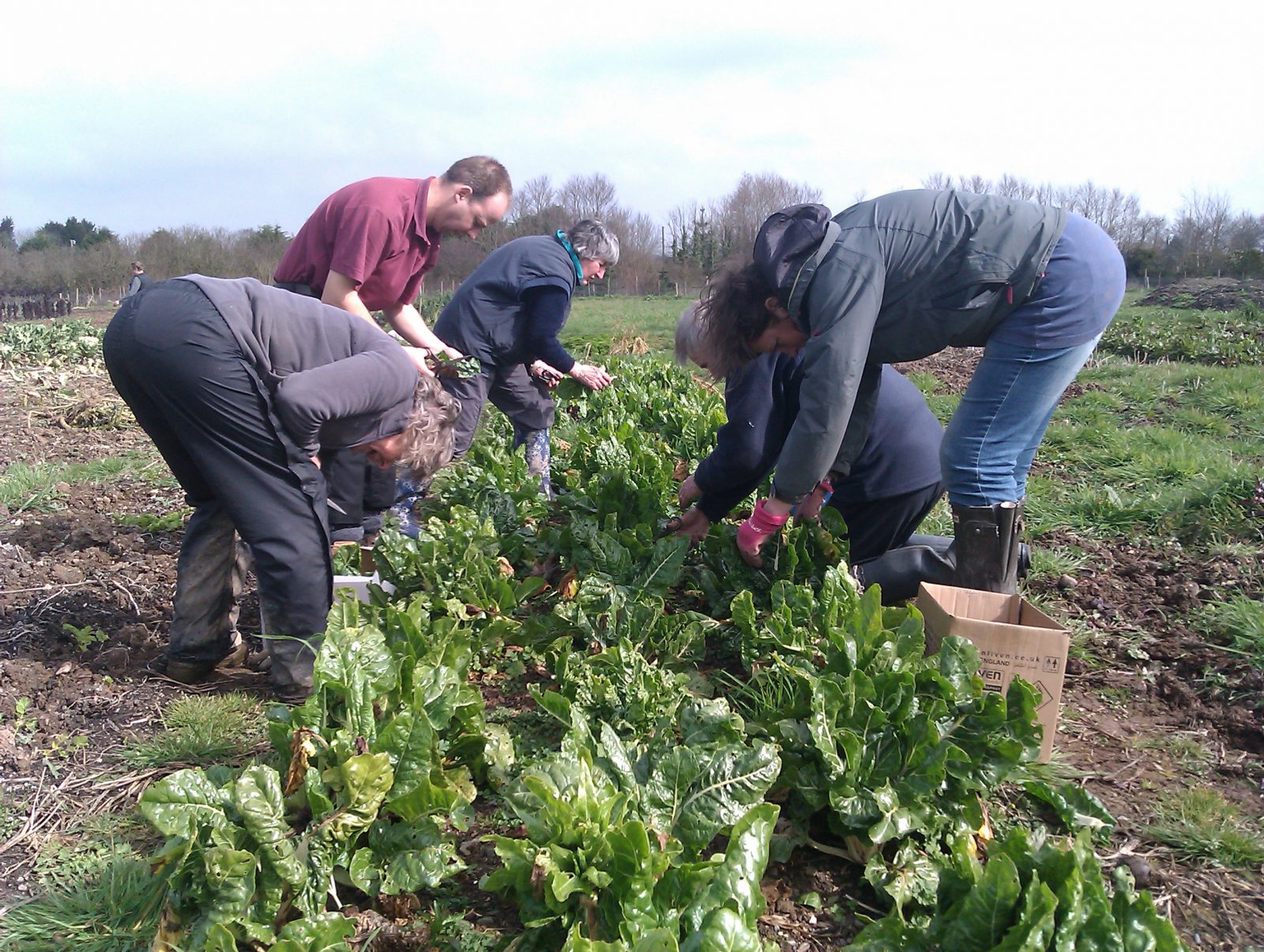
A quick and easy dish that can be made totally with the contents of Camel CSA’s veg boxes over the past fortnight – bar the spices, of course.
This version’s from Riverford Organic Veg but originally came from the Schumacher College at Dartington. They say: “Nice with rice, yoghurt raita and Indian pickles as a vegetarian meal or as part of a bigger Indian meal.”
If anything, the stronger-tasting Swiss chard is better than spinach on this occasion.
Serves: 4
Preparation and cooking time: 20 minutes
Ingredients
1 large onion chopped
2 large potatoes cut into 1/2 inch cubes or smaller
400g spinach or chard, stalks removed, coarsely chopped
1 tsp fresh ginger, grated
1/2 tsp clove garlic coarsely chopped
1/4 tsp cumin seeds
1 tsp turmeric
1 tsp garam masala
olive oil and butter

Method
Fry the cumin seeds in a heavy bottomed pan in the oil and butter until just starting to brown. Add the onion and fry until starting to brown. Add the potato, garlic, turmeric, ginger and garam masala, then fry until starting to soften. Add the chard or spinach and cook until it collapses over the potato. Salt to taste.
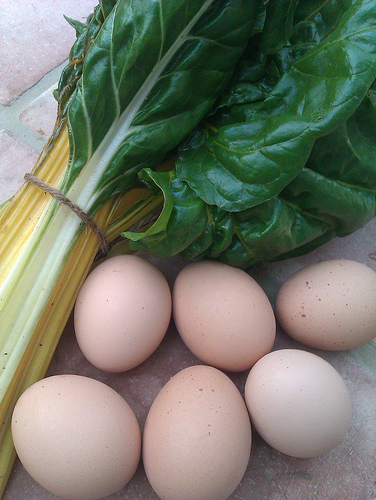
I stumbled across this way of cooking the chard in Camel CSA’s veg boxes this week in The Times. It’s from Lindsay Bareham‘s Dinner Tonight column. And very delicious it is too.
Trouchia is essentially an omelette made with chard, but it’s actually more chard than omelette. Lindsey describes it as “dense with green and just enough egg to bind it together, the spinach-meets-cabbage flavour pointed up brilliantly with garlic and a little Parmesan”.
She adds: “The outside will be lightly crusted and golden, inside will be creamy and soft. It’s more like a frittata than the usual French omelette and is delicious hot, warm or cold.”
As a matter of interest, when most cooks make la trouchia (which is unique to the Nice area of France) they add a thinly-sliced onion when stir-frying the chard.
Serves 2-4
Preparation/cooking: 40 minutes
Ingredients
500g chard
3 fresh eggs
2 tbsp freshly grated Parmesan or Gruyere
5 large garlic cloves
Olive oil
Salt and black pepper
Method
Fold over each leaf and slice off the stalk (use these for another dish). Make a pile of leaves as you go. Using a large chef’s knife, shred the leaves finely. Place in a colander, rinse, then sprinkle with 1tsp salt.
Leave for five minutes while you whisk the eggs in a bowl, seasoning lightly with salt and generously with black pepper. Add the Parmesan.
Crack the garlic, flake away the skin, chop finely then crush to a paste.
Fill a saute pan with water and boil. Rinse the chard and add to the boiling water for 10 seconds. Tip into a colander and hold under running water to cool, then squeeze dry with your hands or against the colander.
Heat 2 tbsp oil in a frying pan over a medium heat. Add the garlic and fry quickly before adding the chard. Stir-fry constantly for about 10 minutes until soft and juicy. Stir thoroughly with a fork into the egg.
Heat a small, non-stick frying pan over a high heat, add 1 tbsp oil , swirling it round the sides. Pour in the omelette mix, stirring and smoothing with a fork without touching the pan. Cook for a couple of minutes, then reduce the heat to very low, cover the pan and cook for about 8 minutes until set.
Using the lid or a plate, quickly invert the pan. Add a little more oil, increase the heat, return the omelette and cook for a couple more minutes. Slide on to a plate and enjoy.

Before the recipe – which comes from Nigel Slater’s Tender – a few points about chard. After all, it grows well on the CSA’s plot so we’ll be seeing it in our veg boxes pretty often and might as well learn how to enjoy it!
- If the stems are wide, they need to be cooked separately from the leaves. Best to cut the stalk a centimetre or so below where the leaf starts. The stem is still tender at this point but will help the leaf keep its shape better during cooking. The leaves can be cooked just as you would cook spinach.
- In a gratin-type recipe, as below, the chard leaves need a good squeeze to get rid of their water.
- Yoghurt, fromage frais and mascarpone are all good as a dressing for freshly cooked chard. Add a trickle of olive oil too, and perhaps a scattering of paprika.
- Chard stalks, however thick, never take longer to boil or steam than three or four minutes.
- Seasoning your chard: anchovies – chopped and cooked to a pulp in olive oil; parsley – can calm the mineral notes of older stalks, especially if used with olive oil and lemon juice; lemon juice and a peppery olive oil – as a dressing for warm leaves and stalks.
Serves 4
Ingredients
450g chard stems and leaves
1 tbsp grain mustard
400ml double cream
a good handful of grated parmesan
Method
Cut the chard leaves from the stems. Chop the stems into short lengths and then cook briefly in boiling, lightly salted water until crisply tender. Dip the leaves in the water briefly, until they relax. Drain well and put them in a buttered shallow dish. Put the mustard in a bowl and stir in the cream and a grinding of salt and black pepper. Pour the seasoned cream over the stems and leaves, cover with grated parmesan and bake at 180C/gas 4 till the top has a light crust the colour of honey.

A green and herby treat from Yotam Ottolenghi to celebrate the first of the season’s swiss chard.
Serves 4 as a starter
Preparation and cooking About 20 minutes
Ingredients
400g swiss chard, leaves only (or 600g spinach)
30g fresh parsley
20g fresh coriander
20g fresh dill
1½ tsp grated nutmeg
½ tsp sugar
3 tbsp plain flour
2 garlic cloves, crushed
2 free-range eggs
salt and freshly ground black pepper
80g feta, broken into small pieces
60ml olive oil
1 lemon, cut into 4 wedges
Method
Bring a pan of salted water to a boil, and simmer the chard for five minutes. Drain, squeeze dry, then whizz in a food processor with the herbs, nutmeg, sugar, flour, garlic, eggs, a third of a teaspoon of salt and some pepper. Fold in the feta by hand.
Pour a tablespoon of oil into a frying pan over medium-high heat and spoon in three heaped tablespoons of the mix, one per fritter. Press down gently to shape into 7cm wide, 1cm thick fritters, and cook for three to four minutes, turning once, until they take on some colour. Transfer to kitchen paper and repeat with the remaining fritter mix and oil. Serve hot with a wedge of lemon.

This recipe from Sarah Raven’s Garden Cookbook is perfect for using the veg in this week’s boxes with the romanesco cauli making a good base. She calls the dish ‘the perfect quick-and-easy weekday supper’. Serve it with rice and chutney.
Serves 6
Preparation/cooking: about half an hour
Ingredients
1 onion, finely chopped
2 tbsp vegetable oil
1 tsp good curry powder
2 x 400ml tins of coconut milk
1 cauliflower, chopped
2 carrots, chopped
1 parsnip, chopped
2 good handfuls of chard or spinach, chopped
french beans (good, but not essential)
bunch of coriander, roughly chopped
salt and pepper
Method
Fry the onion in the oil gently until soft. Add the curry powder and fry again for another minute or two. Then add the coconut milk and vegetables, except the beans if you are using them. Season.
Cook for about 10 minutes, until the veg are tender but not soft. If using beans, add them a couple of minutes before the end. Take off the heat and add the coriander.

A recipe from Allegra McEvedy, who says: “The best thing about this simple supper is the chard … You can use it anywhere you might use wholeleaf spinach, but you will get a more boldly textured result. Chard is even better for you than spinach, too – it just never had the PR muscle of Popeye behind it. It contains less oxalic acid than spinach, which means that we are able to absorb more of its nutrients.”
Apologies to CSA members with small veg boxes who had perpetual spinach rather than Swiss chard this week! Still good for you, though.
Apparently, the Swiss prefix came about in the 19th-century to distinguish it from French chard, which we now call cardoon.
Serves 2
Preparation/Cooking: 30 minutes
Ingredients
150g brown rice
250g Swiss chard (big whole leaf spinach will do)
1 lemon
1 clove garlic, finely chopped
extra virgin olive oil
2 free-range chicken breasts
150g ball of mozzarella
1 ripe tomato
big pinch dried oregano
salt and pepper
Method
Rinse the rice in cold water, then tip into a saucepan with twice the volume of cold water. Bring to the boil, then simmer gently until cooked – about half an hour.
Meanwhile, put a second pan on with salted water for blanching the chard.
Trim and chuck away the very ends of the chard stalks, then cut the stalks away from the leaves. Slice the stalks into 2cm-thick pieces and leave the leaves whole. Blanch the stalks first for about three minutes, then remove from the pan with a slotted spoon, cool under running water and set aside. Now blanch the leaves for three minutes, rinse under cold water and set aside separately from the stalks.
Zest the lemon and put it with the chard stalks.
In a bowl, mix the garlic with the juice of half the lemon, a couple of tbsp of the olive oil and some seasoning. Squeeze the water out of the chard leaves and coat them thoroughly in the flavoured oil.
Oil a baking tray and pre-heat under a very hot grill. Make a cut down the length of the chicken breasts, but not all the way through so that they open up like a book (this is called butterflying for obvious reasons).
Season the meat, then lay on the dressed chard leaves. Top with slices of mozzarella and tomato, and finish with a little salt and the oregano.
Grill for 10-12 minutes. When the rice is cooked, stir in the chard stalks, some salt and a good splosh of olive oil and serve with the chicken on top.
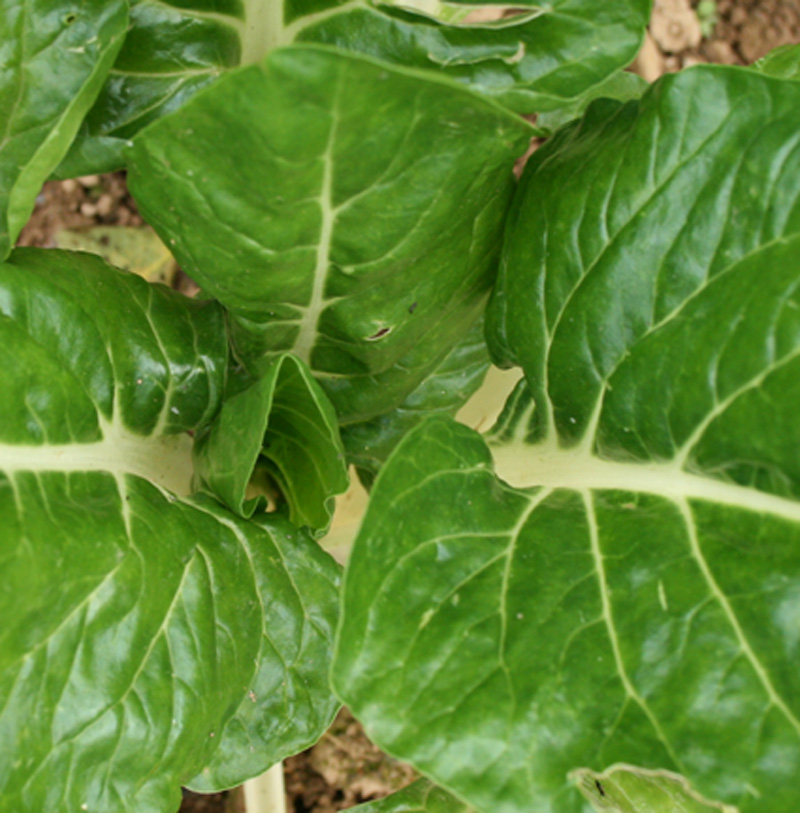
Another excellent recipe from the Riverford Organic Vegetables website.
Preparation time: 25 minutes
Cooking time: 55 minutes
Serves: 4
Ingredients
500g Swiss chard
75g butter
2tbsp plain flour
100g cheddar cheese
750g potatoes
4 garlic cloves
600ml (1 pint) milk
salt and pepper
Method
1. Remove and roughly chop the green part of the chard leaves. Cut the stalks into 2cm lengths and steam for 10 mins. Stir in the green leaves and continue to cook for a few minutes.
2. Wash the potatoes and cut into 1cm slices. Boil for 5 mins until just tender. Drain.
3. Grease a shallow baking dish and layer with half the potatoes, the chard, then the remaining potatoes.
To make the sauce:
1. Melt the butter and fry the crushed garlic for 2 mins. Stir in the flour and continue stirring for 1 min.
2. Gradually add the milk, stirring continuously until the sauce thickens.
3. Add half the grated cheese and season with salt and pepper.
4. Pour the sauce over the vegetables and top with remaining cheese. Bake at 180° Mark 4 for 35 mins.
Do you have a recipe for Swiss chard that you would like to share with the rest of us? Just click on Comments at the top of this article and let us have it!
Click here to see all the recipes that Camel CSA members have recommended so far.


